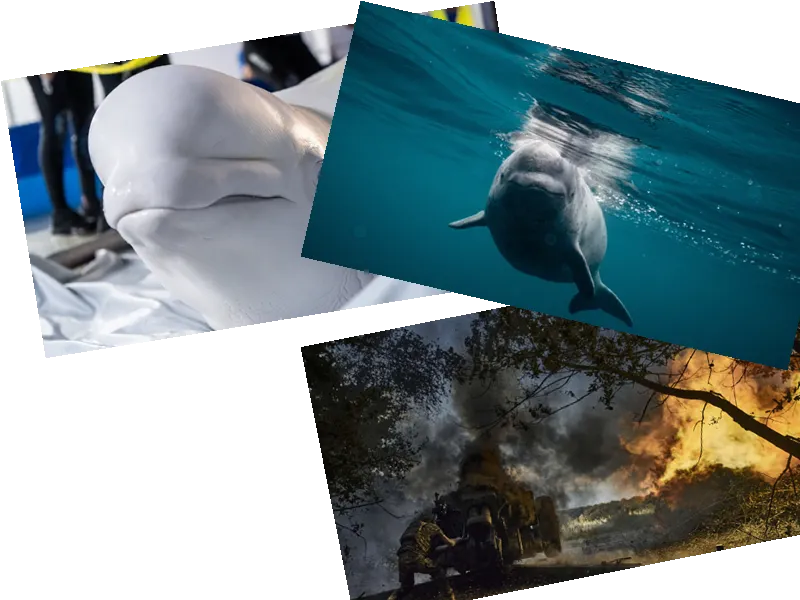High-Risk Operation: Belugas Transferred from War-Torn Ukraine to Valencia
In an unprecedented and high-risk international operation, two belugas from the Nemo Dolphinarium in Kharkiv, Ukraine, have been safely transferred to the Oceanogràfic aquarium in Valencia, Spain. The transfer was necessitated by the frequent bombings in Kharkiv, a city heavily targeted by Russian forces. The animals, a fifteen-year-old male named Plombir and a fourteen-year-old female named Miranda, arrived in Valencia on Tuesday evening in delicate health conditions after enduring a long and perilous journey.
The evacuation began with a twelve-hour road trip from Kharkiv to Odessa, located on the Black Sea. Upon arrival in Odessa, initial veterinary checks were conducted by experts from the Oceanogràfic of Valencia, Georgia Aquarium, and SeaWorld. The cetaceans were then transported by road to Moldova's capital, Chisinau, where they boarded a specially chartered plane to Valencia. The operation included six international specialists in animal care to ensure the belugas' safety and well-being.
The Importance of Animal Protection During Conflict
This rescue mission, carried out under extreme danger, is being hailed as a historic event in terms of animal protection. Carlos Mazón, the president of the Valencia region, emphasized the significance of this operation in a press release. Since the onset of the war in Ukraine in February 2022, the Nemo Dolphinarium has had to evacuate several of its animals, but the transfer of the belugas was particularly challenging due to their delicate health and the high risks involved.
The Oceanogràfic aquarium, which is the largest in Europe, already houses other belugas, white cetaceans native to the Arctic Ocean. These animals generally measure between three and five meters in length and weigh between one ton and one and a half tons. Their life expectancy ranges from 40 to 60 years. The successful transfer of Plombir and Miranda underscores the importance of international cooperation in animal rescue operations, especially in conflict zones.
- The war in Ukraine has led to significant losses on both sides, including among the civilian population. Russian President Vladimir Putin has been evasive about the exact number of Russian casualties, but estimates from Western intelligence services and Ukrainian authorities suggest that the numbers are substantial. Ukrainian President Volodymyr Zelenskyj has reported that 31,000 Ukrainian soldiers have been killed, while estimates of Russian casualties range from 350,000 to 500,000, depending on the source.
- The conflict has also resulted in heavy losses of military equipment for Russia. According to Ukrainian military reports, Russia has lost thousands of tanks, armored vehicles, artillery systems, and other military assets. These figures, however, cannot be independently verified. NATO Secretary General Jens Stoltenberg has noted that the high cost of the war for Russia has resulted in only marginal territorial gains.






